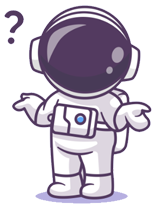Magento (now Adobe Commerce) and BigCommerce are both known as two of the largest, most advanced e-commerce platforms available to the public. They might not be as user-friendly as other options on the market, but they are undoubtedly two of the best options if you’re looking for advanced control over your store and room to grow.
However, that room for growth also means choosing the right option is paramount. You don’t want to find yourself needing to relearn how to use a different platform after years of using another, just because it no longer meets your needs.
That’s why I decided to compare Magento vs BigCommerce. After comparing them extensively, I will say that BigCommerce is the best choice for most business owners. It’s not because Magento isn’t good, mind you, but it requires a level of technical know-how and constant maintenance.
Keep reading to find out why I recommend BigCommerce for most businesses and where Magento can shine for you. Or try BigCommerce for free right away.
Templates
Magento and BigCommerce Have Limitless Templates if You’re Willing to Go Third-Party
Though Magento is as much an e-commerce platform as BigCommerce in name, it works differently than the other e-commerce platforms we’ve reviewed. Platforms like BigCommerce, Ecwid, and Shopify function as e-commerce-focused website builders, which means they broadly share characteristics like a focus on user experience, visual design customization, and self-hosting. Magento is more of a staging environment that provides the required structure for web developers (not designers) to build an e-commerce site.

Those are a lot of words to say that Magento isn’t really a front-end-focused tool. If you need to customize something, you don’t drag-and-drop elements as much as you write code and use command terminals to install features. Since it’s not really built around user-friendly design options, Magento doesn’t offer templates in the traditional sense. And there aren’t really that many options in the untraditional sense either. If you go through the Adobe Commerce Marketplace, you’ll only find 9 themes, 3 of which are free, and 5 of which cost over $100.

BigCommerce, on the other hand, offers a more familiar and comforting theme store with over 190 options categorized by industry, purpose, and price. These templates are high-quality and attractive, with distinct designs that work for their target industries, such as an elegant tone for a jewelry store or an energetic and exciting one for a toy shop. That said, only 12 free templates are available on the BigCommerce theme store, and some templates cost over $300.
Looking only at the official theme stores, you might not be too excited about the prospect of having virtually no options vs. having to pay about as much as you would for a small fridge for a quality template. However, those limitations only exist if you restrict yourself to the official channels. You can install third-party templates on both BigCommerce and Magento, and there are thousands of good-looking, high-quality options for both around the web. Some of them are surprisingly affordable.
Taking into account the sheer number of quality templates you can find, I’d honestly recommend that you go the third-party route of either platform. However, that also means that a direct comparison is impossible since it comes on a case-by-case basis. So, for this comparison, I can only compare what’s offered on each platform’s official marketplaces, and under that metric, BigCommerce is undeniably this round’s winner.
Features and Ease of Use
Magento Made Me Want to Drive My Head Through a Wall
Magento’s features are only limited by your imagination and how many git repositories you’re willing to comb through. That said, Magento is far from user-friendly. I’ll admit that a good chunk of my frustrations stemmed from the fact that I insisted on installing Magento locally (on my home computer instead of on a server). But any platform that forces me to install two separate virtual machines just to get up and running will sour my opinion on its ease of use (you’ve been warned, Drupal).
Getting started with BigCommerce is a lot simpler. All you have to do is head over to BigCommerce’s site, choose BigCommerce Essentials, and select a plan that works for you or get started with a 15-day free trial. Then, you’ll just have to input contact information like your name, email, and phone number to get started.

Things get a little different once you start. Both platforms offer a comprehensive set of advanced e-commerce features. Naturally, this gives you more control over how you want your store to work, but it also means that the more options there are and the more in-depth they get, the steeper the learning curve becomes. If you prefer easy website customization that doesn’t require coding, drag-and-drop website builders might be better for you.

I’d call Magento the less user-friendly version but only because it provides an even larger and more in-depth set of tools than BigCommerce. That would put both back to square one if it wasn’t for BigCommerce’s design features. Its theme customization isn’t perfect, but you do get a lot more control over the look and layout of your site than you would with Magento’s incredibly basic visual page builder.
While e-commerce features are the most important aspect of an e-commerce platform, good website design can make an enormous difference when it comes to turning visitors into customers. So BigCommerce wins this round as well.
Apps and Plugins
BigCommerce and Magento Offers No Limits to Store Expansion
There are over 1,300 extensions available in the BigCommerce app store, from AI-powered integrations to financing and marketing integrations, and of course, tons of integrations with third-party services like TikTok, PayPal, and Amazon. With so many integration options, the quality and price vary widely.

Not to be outdone, Magento has over 4,000+ plugins available in the Adobe Marketplace alone. That’s without taking into consideration any extensions that might be available through different channels.
Once again, seeing the large number of options available for both platforms, a one-to-one comparison isn’t really possible here. I was originally tempted to give BigCommerce the win because its extensions are easier to install. But due to Magento’s open-source nature, you can develop an app for virtually any purpose, and there’s just no competing with that kind of flexibility. Magento takes the win in the app category.

Marketing
BigCommerce’s Marketing Tools Are Easier to Use
Magento’s backend includes a dedicated marketing tab from which you can create email newsletters, manage user comments, and edit custom rules for shopping carts and catalogs. As with anything else in Magento, these options don’t really come with any hand-holding to help you create marketing campaigns or promote your site, but you do get full access to advanced settings. That means that the impact of your in-store marketing is entirely up to you, for better and for worse.
BigCommerce, on the other hand, offers a much more classic marketing tab with separate sections for creating banners, promotions, gift certificates, abandoned cart recovery, and more. Using any of these tabs is a considerably user-friendly way to create successful marketing for your site.
SEO
You’ll Have to Set Up Your SEO Settings Manually
As for search engine optimization (SEO), it’s extremely important that you can access all the relevant SEO features like URL customization, sitemap creation, meta tags and descriptions, and more if you want to appear in a good spot in search engine results.
The good news is that both Magento and BigCommerce give you complete access to all the things I mentioned above. The bad news is that neither really provides any help or guidance on its own (BigCommerce does offer SEO audits for an extra fee). This means that applying the best SEO practices to your site will be completely your responsibility.
Pricing
Overall, BigCommerce Is the Most Affordable Choice
I was able to get my Magento site up and running completely for free, which might run counterintuitively to what the title above says. However, that’s only because I installed it on a local server, which means that my Magento site doesn’t really exist if my computer is off.
Though the Magento open-source application is entirely free, you will have to set it up on a server you have administrator access to. That means that you can’t just use any regular shared hosting either. You need, at the very least, virtual private server (VPS) hosting for a functional Magento store. And that’s not even counting additional costs you might need to take into account like Secure Sockets Layer (SSL) certificates, Domain Name Systems (DNS), and additional security protections.
However, that’s not the only way to get Magento. Adobe offers managed solutions as part of the Adobe Commerce package. So you can get all the benefits of Magento without having to purchase multiple different services and have all the technical aspects of installation and management handled for you. And it only costs… thousands of dollars.
Adobe Commerce doesn’t offer plans at a fixed price point like other platforms. Instead, you have to get in touch with Adobe for a custom consultation where they’ll take your store’s calculated value into account to come to a pricing agreement. Though I wasn’t able to get an exact number for my tests, the average price is anywhere between the low thousands (but not lower than $10,000) and… well, the high thousands.
Though BigCommerce Enterprise operates under a similar model, BigCommerce Essentials (the version I used for my testing) follows a more traditional pricing structure, with a starting price of $29.00 per month for the Standard Plan and going up all the way into $299.00 per month for the Pro Plan.
Usually, here’s where I’d compare similar plans to help you visualize the difference, but unfortunately, there’s simply not enough common ground for any kind of comparison. To be honest, I don’t recommend the Adobe Commerce options and would advise you to look for your own server, security, and whatnot on your own, which could probably bring down the price considerably.
If you’re looking for an enterprise-level plan, then the pricing competition is probably a lot closer. For most online businesses though, BigCommerce is by far the most affordable choice.
| Adobe Commerce | BigCommerce | |
| Starting price | Price on request (usually from $10,000 per year) | $29.00 |
| Unlimited products | ✔ | ✔ |
| Automated tax calculation | ✔ | ✔ |
| Abandoned cart recovery | ✔ | ✔ (from Plus plan) |
| Built-in shipping and fulfillment services | ✘ | ✔ |
| Point-of-sale (POS) system | ✘ | ✔ |
| 24/7 customer support | ✔ | ✔ |
Support
Magento’s Community Support Provides Continuous Multichannel Assistance
Besides the official channels at Adobe, Magento has a large and dedicated community of developers, enthusiasts, and merchants that constantly provide support, update the app, and create new offerings like applications and themes.
The truth is that with any doubt you have regarding Magento, you’ll have thousands of enthusiastic peers ready to help (and more than likely, that your question has already been asked and answered). However, since I’m comparing Magento as a product, I’ll have to limit myself to the official channels once again.

Adobe Commerce offers separate dedicated plans for customer support. These plans offer online assistance, phone support, forums, and knowledge bases. I didn’t purchase a plan for testing, but I did reach out through email to ask about Adobe Commerce’s pricing. I got a response instantly, and though I was connected to the wrong department (I was first contacted about payment services integrations) the eventual answer was prompt and useful enough.

BigCommerce, on the other hand, offers phone, chat, and email support. I wasn’t able to contact BigCommerce’s email support on the free plan. As much as I tried, I couldn’t get the live chat option to redirect me from a chatbot to an actual person, but the bot was competent enough to sort of answer my question promptly. Outside of my experiences, I found mostly positive comments about BigCommerce’s support in my research.
When it comes to official channels, there’s no doubt, BigCommerce takes the win once again. However, I really can’t understate the quality of the Magento community’s support.
BigCommerce Is the Clear Choice for Most, but Magento Could Be Outstanding for the Rest
I’ve compared truly bad services against better ones before, with the best service winning about every category. But that’s not the case with Magento vs BigCommerce. Though BigCommerce won by a landslide in most categories, it doesn’t mean Magento is bad, just less suitable for most users.
Most starting e-commerce websites don’t have the luxury of having a dedicated web developer on board and probably don’t have access to a VPS or their own deployment server. The truth is that as a package, Adobe Commerce can get prohibitively expensive. So, if you run a small-to-medium-sized business, BigCommerce is the most affordable, complete, and user-friendly option.
However, if you do have the technical proficiency, then Magento is one of the most powerful tools out there. It will give you control over every single aspect of your site. Just keep in mind that outside of the Adobe Commerce package, Magento is an unmanaged service, so it’ll be up to you to keep an eye on your store’s health constantly.
FAQ
Which is better for beginners, Magento or BigCommerce?
Without a shred of doubt, BigCommerce is better for beginners because of its user-friendly dashboard and intuitive design options. Magento (formerly Adobe Commerce) involves a lot of technical know-how that, while it can give you a lot of control over your store, isn’t really beginner-friendly.
What’s the difference in pricing between Magento and BigCommerce for small businesses?
Magento requires that you get your hosting, security, domain registration, and more through separate providers unless you sign up for one of Adobe Commerce’s managed packages, which can be expensive for small businesses. BigCommerce offers a more accessible pricing structure.
Which platform is better for international e-commerce businesses, Magento or BigCommerce?
It depends on the level of technical expertise and the kind of resources you have available. If you can afford a dedicated developer and manage distribution, Magento offers a lot more flexibility and plugins. If you have a smaller business, then BigCommerce will be a much better option.
Which e-commerce platform is more customizable, Magento or BigCommerce?
Magento is by far the most customizable platform if you have the required knowledge to customize it, but you will need to know a thing or two about web development. BigCommerce offers more user-friendly customization, but it can feel rather limited. Check out our comparison of the best e-commerce builders in 2025 to find the platform that best fits your vision.
















